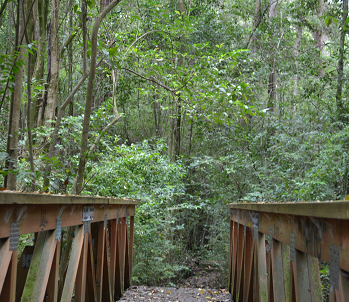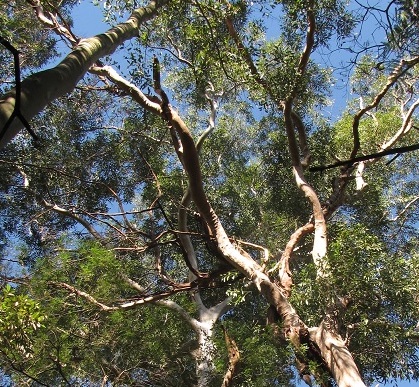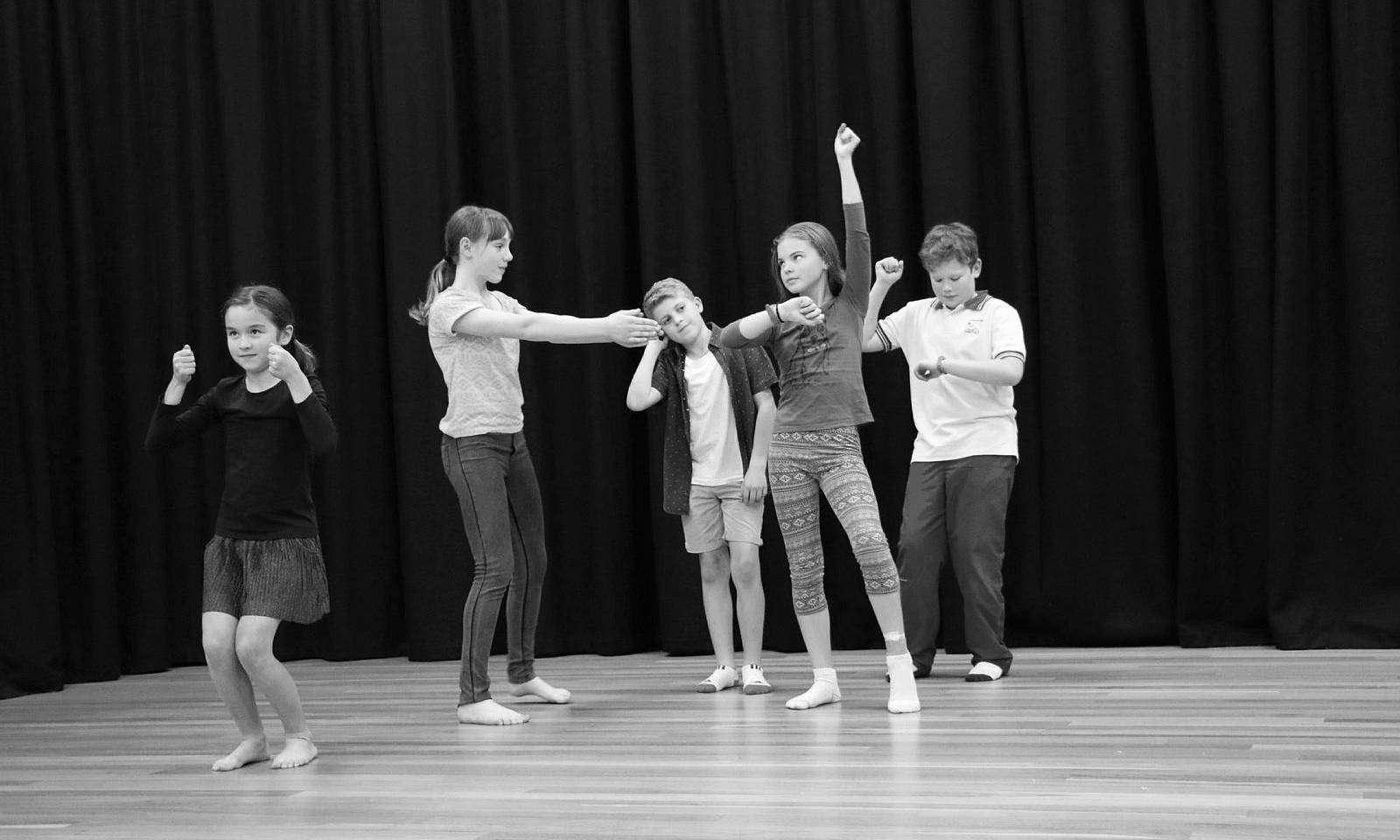Bushland reserves
(Back to top)Our precious bushland provides natural benefits to the community.
Trees and shrubs act like the lungs to our City:
- processing pollution and providing clean air for us to breathe
- native flora creates habitat and food sources for wildlife
- undisturbed spaces offer tranquil escapes from the fast pace of city life.
We all benefit from securing the future of our bushland.
Original bushland
Unfortunately, much of Parramatta's original bushland was cleared for farming and timber, and recent clearing has been the result of residential and commercial development.
The remaining bushland exists as narrow corridors along our creeks and rivers, now primarily listed as endangered or critically endangered space.
Protecting our bushland
This bushland is home to a diverse range of flora and fauna, including vulnerable and endangered species such as the Green and Golden Bell Frog and Powerful Owl.
Protecting our bushland is paramount for future generations and for the sustainability of our ecosystem.
Hectares of native plants
City of Parramatta governs approximately 840 hectares of native plants. Approximately 500 hectares is located near rivers and bushland reserves.
These areas include:
- Darling Mills Creek (Northmead, North Rocks)
- Devlins Creek (Beecroft, Carlingford)
- Edna Hunt Sanctuary (Epping)
- Terrys Creek (Eastwood, Epping)
- Hunts Creek (North Rocks, Carlingford)
- Lake Parramatta Reserve (North Parramatta)
- Newington Nature Reserve (Sydney Olympic Park)*
- Quarry Branch Creek (Northmead, Winston Hills)
- Parramatta River (Parramatta, Rydalmere, Ermington, Melrose Park)
- Ponds-Subiaco Creek (Carlingford, Dundas, Dundas Valley, Rydalmere)
- Toongabbie Creek (Constitution Hill, Northmead, Old Toongabbie, Toongabbie, Wentworthville, Westmead, Winston Hills)
- Vineyard Creek (Dundas, Oatlands, Telopea).
*Managed by Sydney Olympic Park Authority
Threatened ecological communities
(Back to top)An ecological community is made up of naturally occurring native plants, animals and other organisms coexisting in a unique habitat.
A healthy ecological community naturally maintains clean air and water, provides nutrients for the soil and protection against erosion and salinity for the species living in the environment.
Threatened ecological communities suffer a sharp reduction in species, and are at risk for extinction.
Threatened ecological communities within the City of Parramatta's include:
- Blue Gum High Forest
- Castlereagh Ironbark Forest
- Coastal Saltmarsh
- Cumberland Plain Woodland
- Freshwater Wetlands
- River-Flat Eucalypt Forest
- Shale Gravel Transition Forest
- Swamp Oak Floodplain Forest
- Swamp Sclerophyll Forest
- Sydney Turpentine-Ironbark Forest.
We recognise the importance of these ecological communities and have highly prioritised the restoration, protection and conservation of these areas.
Weeds
(Back to top)Weeds are plants that pose a threat to agriculture, industry, the environment, human health or the community and have the potential to spread to other areas.
Biosecurity Act
Under the Biosecurity Act 2015 and its accompanying Biosecurity Regulations, plants are no longer termed “noxious weeds” nor do they have “classes” of weeds.
The Biosecurity Act 2015 provides greater flexibility to respond to, manage and control all weed species.
All plants are assessed for their biosecurity risk. This is the risk that the introduction, presence, spread or increase of a plant will have, or may potentially have, an adverse effect on the economy, the environment or the community.
For helpful information on the identification and control of invasive plants, visit NSW WeedWise or Sydney Weeds Network (Council representative participates). For fact sheets describing simple weed removal techniques visit Weed removal fact sheets.
The quickest and most effective way of dealing with weed issues on your neighbours’ property is to foster good relations with your neighbour and seek to resolve the issues together. If this is not possible, contact Council and an authorised officer will inspect the property.
The City of Parramatta's Natural Resources Management team actively undertakes weed control on Council’s bushland and riparian reserves. Individuals are encouraged to join their local volunteer Bushcare groups to actively restore natural bushland.
Biodiversity Strategy 2015-2025
(Back to top)Life in our City is City of Parramatta's Biodiversity Strategy 2015-2025, developed to protect our local environment.
This strategy provides a framework to ensure biodiversity is conserved whilst recognising land use along with social, health and economic issues within our Local Government Area.
Read the Biodiversity Strategy 2015-2025:
Bushland Management Plan
(Back to top)Council is currently developing a Bushland Management Plan, an internal document for staff, contractors and volunteers.
The plan will guide the planning and implementation of biodiversity restoration and regeneration activities on Council managed bushland reserves and riparian zones.
For more information
(Back to top)Contact the Natural Resource Team on 9806 8280 or bushcare@cityofparramatta.nsw.gov.au




